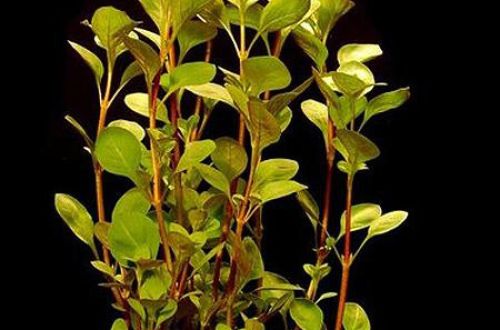
Pogostemon yatabeanus
Pogostemon yatabeanus, scientific name Pogostemon yatabeanus. The plant is native to East Asia (Japan, China, Korea). It grows everywhere on moist substrates near water, as well as in submerged state in the shallow waters of lakes, swamps, backwaters of rivers and other bodies of water.
It first began to be used in aquariums in the 1990s in the work of Takashi Amano, the founder of the natural aquascape. At that time, the plant was known as Eusteralis yatabeana. Then it was exported to the USA, and since 2013 ended up in Europe.
The underwater form resembles the Broadleaf Pogostemon (Pogostemon stellatus “Broad leaf”) in its appearance and size, except for the color of the leaves. In a favorable environment, it forms a tall, erect, strong stem with elongated linear leaves directed upwards. The edge of the foliage of the plate is slightly serrated. Pogostemon yatabeanus retains its green color regardless of growth conditions, while other related species exhibit red tints in bright light.
Makes relatively low demands on its content. Optimum conditions are achieved with a sufficient level of light, the introduction of carbon dioxide and liquid fertilizers containing nitrates, phosphates, iron and other trace elements. It grows quickly in such an environment, so in small aquariums it should be placed in the middle or background.




